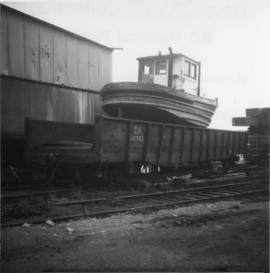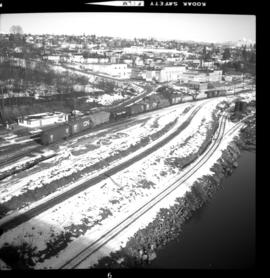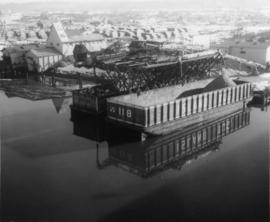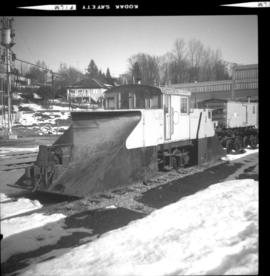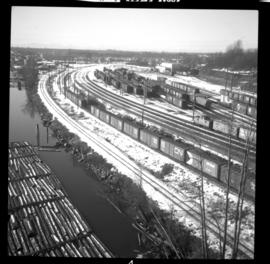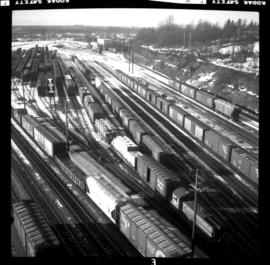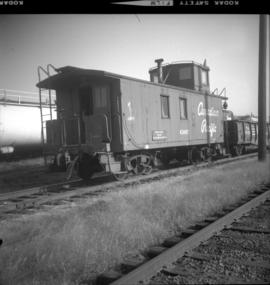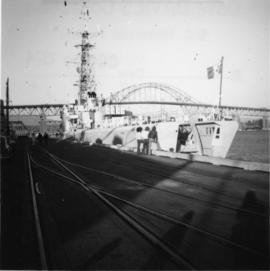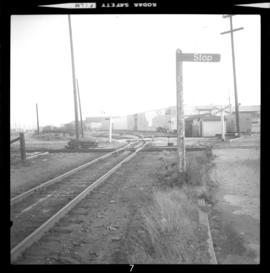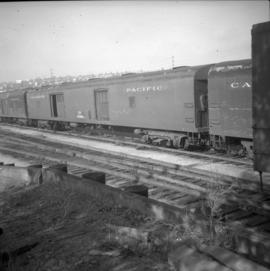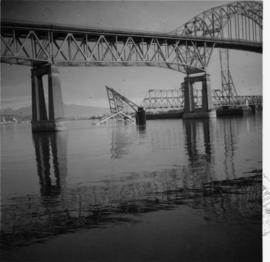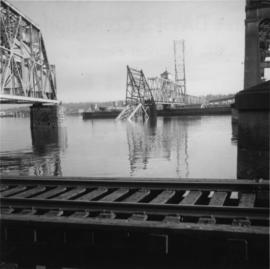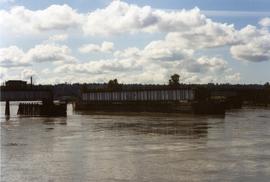Photograph depicts a boom tug called "Atlas Captain" that was brought in for refitting, adjacent to a smalll boat repair yard. It was loaded on a CN gondola car and then removed by a derrick crane.
Photograph taken at the east end of the BC Hydro Railway yards in Queensborough, looking north east from the bridge in New Westminster.
Photograph taken on the north arm of the Fraser River. Looking southeast from Queensborough Bridge to the north end of Wood Street.
Photograph taken at the BC Hydro Railway yards in Queensborough, New Westminster. Visible is a snow plough that was mounted on a former steeple cab electric locomotive.
Photograph taken at the BC Hydro Railway yards in Queensborough, New Westminster.
Photograph taken at the BC Hydro Railway yards in Queensborough.
Photograph depicts a CPR caboose #436917 in New Westminster. It is all wood and was built in 1928. It was lettered "Rubbish service between New Westminster and Coquitlam." A crewman said it was quiet running compared to modern all metal ones.
Photograph depicts RCN "Restigouche," a destroyer escort that was fitted to eliminate submarines. It towed a 7 ton sonar pod and had 8 torpedoes that were launched by rockets. It was first initiated in 1954. Canada, at the time, had 4 ships of this class.
Photograph depicts a cross over. Track on the left to right are owned by the BC Hydro Railway, with the tracks on the right going to the Queensborough rail bridge. The tracks receding into the background are believed to be owned by the CPR.
Photograph depicts CP rail interchange yards about 1/2 mile west of the city center of New Westminster. In the view is CP baggage car #272046 made by the Canadian Car Co. It is now in use as a horse box with end loading.
Photograph depicts the Federal Railway Bridge in New Westminster. Its span had been knocked down by an unmanned scow. New span was to be floated in on by April 22, 1976.
Photograph depicts the Federal Railway Bridge in New Westminster. It had been knocked down by a runaway scow. The new span was to be built and installed by April 22, 1976.
Photograph depicts railway track previously owned by BCER. It led onto the east end of Lulu Island and then to Annacis Island. Looking from the Naew West River Walk to the Queensborough bridge that was protected by signals and had a high chain link fence to deter pedestrians. It was likely that the rail was only used at night. Originally built by Canadian Northern Railway to reach Steveston, circa 1917.
